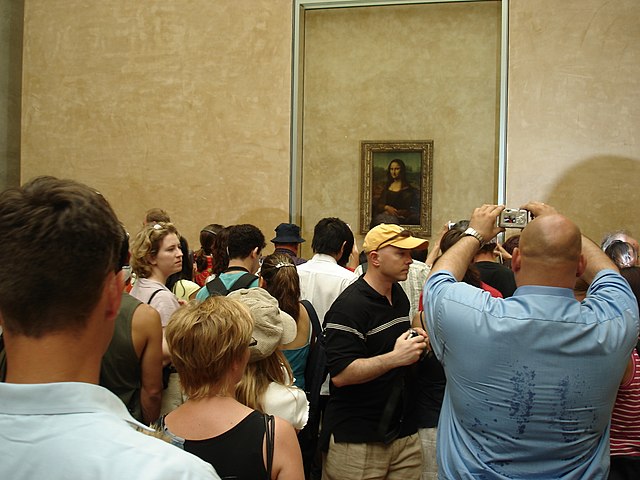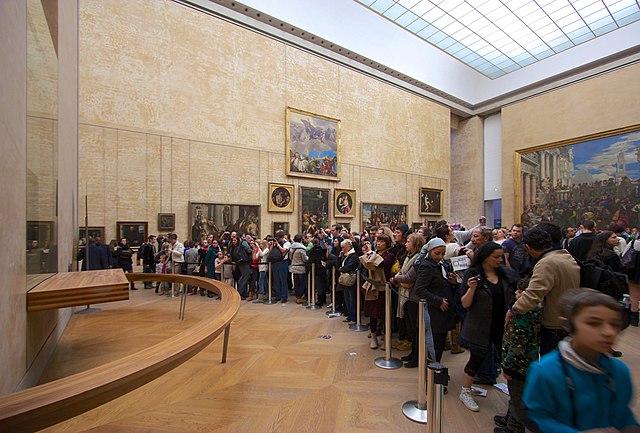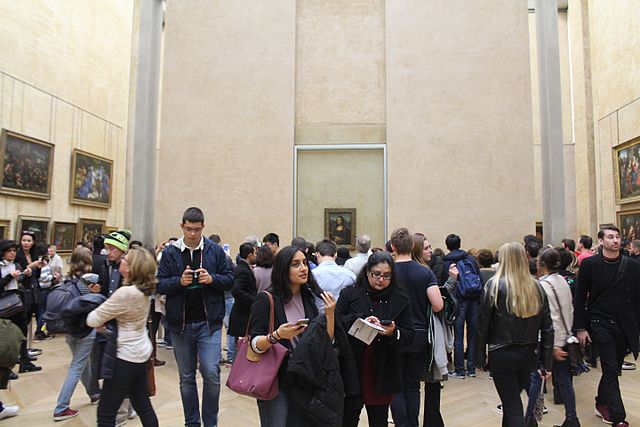
Through the generosity of the late Professor Benedict Anderson and Ajarn Charnvit Kasetsiri, the Thammasat University Library has newly acquired some important books of interest for students of Association of Southeast Asian Nations (ASEAN) studies, political science, literature, and related fields.
They are part of a special bequest of over 2800 books from the personal scholarly library of Professor Benedict Anderson at Cornell University, in addition to the previous donation of books from the library of Professor Anderson at his home in Bangkok. These newly available items will be on the TU Library shelves for the benefit of our students and ajarns. They are shelved in the Charnvit Kasetsiri Room of the Pridi Banomyong Library, Tha Prachan campus.
Among them is a newly acquired book that should be useful to students who are interested in the fine arts, cultural politics, sociology, history, and related subjects.
Mona Lisa’s Escort: André Malraux and the Reinvention of French Culture is by Herman Lebovics, a longtime Professor of History at Stony Brook University in Stony Brook, New York, the United States of America. The TU Library also owns another book by Professor Lebovics, Bringing the Empire Back Home: France in the Global Age.
Mona Lisa’s Escort discusses how André Malraux, a French novelist, art theorist, and Minister of Cultural Affairs for France, agreed to lend a famous painting to an exhibit in Washington, DC in 1962. The TU Library owns a number of books by and about André Malraux.
By allowing a famous work of art from the Louvre Museum in Paris to travel far from its usual place, André Malraux showed how culture and the fine arts can have importance in international relations.
The TU Library also owns another book about the Mona Lisa, a portrait painting by the Italian artist Leonardo da Vinci. It is generally thought of as one of the most famous art works in the world. Although it is an Italian painting, it has long been in France, because it was purchased by King Francis I of France in the 1500s. It has been on display at the Louvre Museum in Paris since the end of the 1700s.
Many people wonder why the Mona Lisa is so famous. Part of the reason is because it was displayed in an important place for many years. Also, it was by an admired artist who was a scientist as well as a painter. And the image shows a woman smiling a little mysteriously, which added to the interest of the portrait.
Crowds of tourists go to the Louvre Museum and most are disappointed, because they cannot get near the painting, and so many people are trying to look at it that it is difficult to concentrate.

Here are some thoughts about Leonardo da Vinci and his most famous painting:
- Studying Leonardo… will not only allow us to recognize his science as a solid body of knowledge. It will also show why it cannot be understood without his art, nor his art without the science.
Fritjof Capra, The Science of Leonardo (2007)
- For Leonardo, painting is both an art and a science…
Fritjof Capra, The Science of Leonardo (2007)
- Leonardo is the Hamlet of art history whom each of us must recreate for ourselves.
Kenneth Clark, Leonardo da Vinci (1989)
- He was like a man who awoke too early in the darkness, while the others were all still asleep.
Sigmund Freud, Leonardo Da Vinci (1916)
- He who thinks of Leonardo’s paintings will be reminded by the remarkably fascinating and puzzling smile which he enchanted on the lips of all his feminine figures. It is a fixed smile on elongated, sinuous lips which is considered characteristic of him and is preferentially designated as “Leonardesque.” In the singular and beautiful visage of the Florentine Mona Lisa del Giocondo it has produced the greatest effect on the spectators and even perplexed them. This smile was in need of an interpretation, and received many of the most varied kind but none of them was considered satisfactory. As Gruyer puts it: “It is almost four centuries since Mona Lisa causes all those to lose their heads who have looked upon her for some time… Let us leave the physiognomic riddle of Mona Lisa unsolved, and let us note the unequivocal fact that her smile fascinated the artist no less than all the spectators for these 400 years. This captivating smile had thereafter returned in all of his pictures and in those of his pupils. As Leonardo’s Mona Lisa was a portrait we cannot assume that he has added to her face a trait of his own so difficult to express which she herself did not possess. It seems, we cannot help but believe, that he found this smile in his model and became so charmed by it that from now on he endowed it on all the free creations of his phantasy.
Sigmund Freud, Leonardo Da Vinci (1916)
- The more the manuscripts of Leonardo are studied, the more one begins to see him not so much as a transcendent artist, but primarily as a man of science, whose skills and commissions as an artist and engineer enabled him to support his fascination with nature.
Sherwin B. Nuland, Leonardo Da Vinci (2000)

Thailand and the Mona Lisa
In 2014, the Thai journalist Karnjana Karnjanatawe published A moment of selfie-reflection with the Mona Lisa in The Bangkok Post. She noted:
What would you do if you came across a superstar? You might quickly grab your phone from your pocket and snap his or her photo. But what if the superstar is not a real, breathing person — what if she’s the Mona Lisa?
It was an ugly scene in a beautiful setting I recently witnessed — visitors at the Louvre in Paris scrumming to be in front of the most famous painting in the world, all for one purpose — a selfie.
The painting was created more than 500 years ago by Leonardo da Vinci. The portrait is believed to be that of Lisa del Giocondo, the wife of a Florentine merchant. The painting is one of the must-see exhibitions at the museum.
To have the chance to see her up close is a challenge, but not because she is hard to find — the 16th-century portrait has been displayed on a dedicated wall, behind non-reflective and unbreakable glass, in the museum’s Denon Wing since 2005.
Once you reach the Mona Lisa’s room, you will see a sea of people in front of the painting. The crowded area helps you locate the masterpiece right away. Then you will see dozens of hands in the air, holding all sizes of digital cameras, iPads, tablets and smartphones, all of them trying to take a picture.
Voices calling out to each other to take pictures resonate with the sounds of camera shutters constantly clicking. Some visitors even use a flash, despite the fact that the rules say that flash photography is not allowed. Four security guards — two on each side of the painting — do not react. They look into the crowd and talk to each other from time to time.
To get yourself in front of the Mona Lisa, speed is of the essence. As soon as someone is making their way away from the front of the painting, squeeze yourself in. You have to be as fast as possible, otherwise someone else will seize the opportunity. There is no queue, in case you’re wondering… But you might not be able to stand there for long, especially if you are positioned near the centre of the painting, as you will be pushed by the force of visitors who want to be there too.
Given the difficulty of seeing the painting in Paris, TU students may have taken the opportunity of seeing a version of the painting at a digital exhibition in Bangkok in September 2019.
Commemorating the 500th anniversary of the death of Leonardo, 17 of his works, including the Mona Lisa, were reproduced in light boxes at River City Bangkok.

(All images courtesy of Wikimedia Commons)

